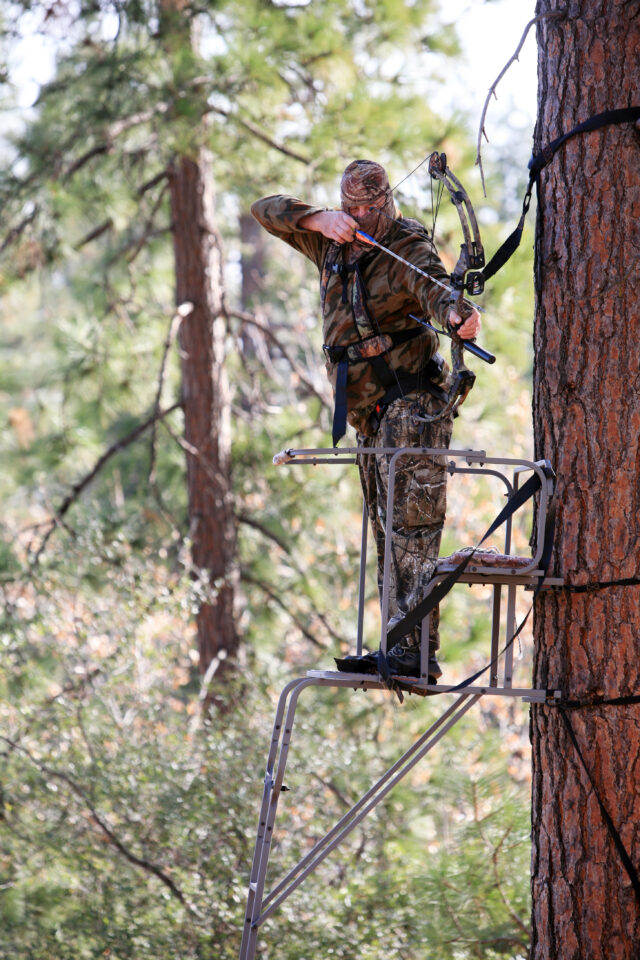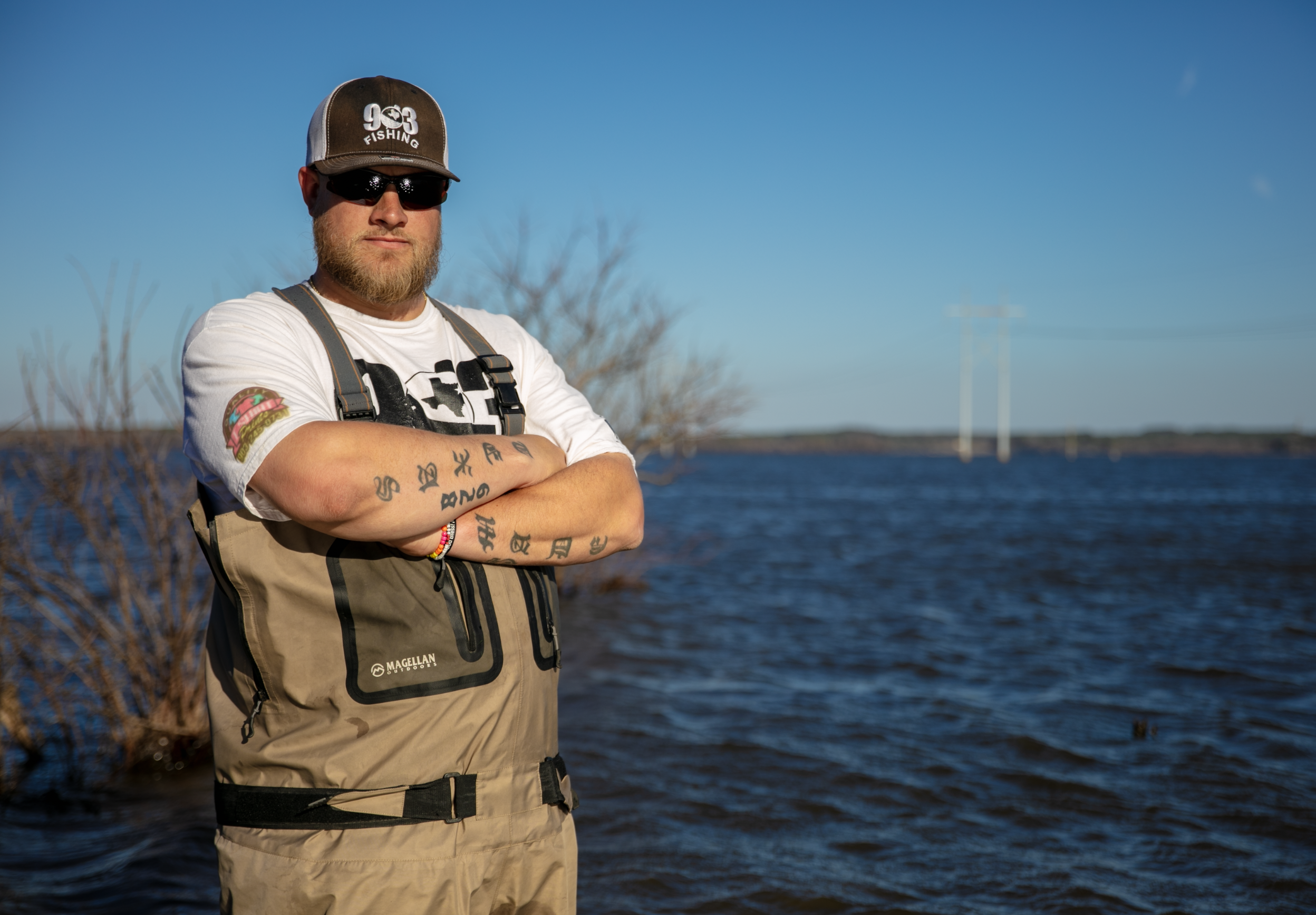by Jack Roche
Hunter safety has been stressed by fathers and grandfathers since hunting began; and was mandated in Texas in the 1980s. These safety measures have focused mostly on firearm safety. I think we will all agree that improperly handled firearms can be a serious danger, but the majority of hunting related injuries reported each year are not firearm related at all. By far, the majority of injuries occurring while hunting are related to falls from tree stands. Researchers predict that over 5,000 hunters nationwide will require medical attention from a tree stand fall this year.
Often, different stand locations, terrain, and trees call for different types of stands. Many different options are available, all with their own inherent dangers. All are designed to get the hunter above the line-of-sight, and hinder the ability of the game they are pursuing to see or smell him. Ladder stands, hang-on stands, and climbing stands are typical, commonly used in the deer woods, and are often part of the equation when an accident occurs. Just being twenty feet or more up a tree is in itself dangerous, but add in darkness, slick boots, slippery mud, icy steps and platforms, hunter complacency, and other factors and you now have a recipe for disaster. Many hunting related fall victims have admittedly fallen out of their stand after dozing off.
Tree stand safety begins with preventative maintenance. Many of us have stands that have been in the same location for many seasons. These stands are connected to the tree with cables, chains, ratchet straps, or some other type of securing device. The problem occurs when hunters fail to check the stands and attaching apparatus each season, and replace the necessary components when needed. The cables, chains, and bolts can rust, wear, and deteriorate. Welds can break. Ratchet straps rot and fall victim to rodent damage. When any of these components fail, there is a good chance of the hunter falling to the ground. As has been said, “The fall isn’t bad, but that sudden stop afterward is what gets you.”
While many hunters deny the necessity of safety equipment, there is no denying that a properly used full body safety harness that wraps around your thighs, over your shoulders, and under your arms, coupled with a properly utilized lifeline will prevent serious injury or death from a fall every time. The lifeline allows the hunter to be attached to the tree during the climb up and down, not just when you are already in the stand itself. The lifeline stays secured to the tree above the stand and near the ground. Your full body harness attaches to a sliding Prusik knot by a carabiner before you ever get off the ground. The Prusik knot, also called a friction hitch, then slides freely up or down the rope during the climb or when descending the tree. Although the knot slides freely during the climb, a fall will cause the knot to bind and tighten on the rope and stop the fall. This system virtually eliminates any possibility of falling to the ground. If your harness is connected to the lifeline, you cannot fall to the ground. The harness stays attached to the lifeline system until the hunter is back safely on the ground after the hunt. The biggest supporters, and loudest voices in support of the harness systems, are those hunters who have almost fallen, or have survived a tree stand fall.
I agree that if you have hunted for years without using a harness system, it will take a little time to get accustomed to it. Much like seat belts in the truck, life jackets on the boat, helmets on a motorcycle, or eye and hearing protection at the firing range, it takes some getting used to but will soon become a habit … a good habit. Putting on the harness and attaching the lifeline will add a minute or less to a 20 foot climb. That is hardly a good excuse to skip this step.
The technology of the full body harness has come a long way from the early safety belts. They have evolved to near perfection. They are no longer uncomfortable, nor do they get in the way when shooting. They fit snug to your body and do not interfere with your shooting ability. Due to improved design technology, in case of a fall, you will be suspended upright instead of head down. Most now come with a suspension relief strap. This strap allows the fallen hunter to place the strap onto his foot, then put his weight into the strap to relieve the pressure from hanging. This will prevent any tissue damage if the hunter finds himself suspended for a long period of time while waiting for assistance. Another option is to keep a screw-in step in the harness pocket to screw into the tree and allow the hunter to relieve pressure, or assist him in getting back onto the stand platform. The hunter should have the safety rope or lifeline secured a couple of feet above head high when standing on the platform. If the rope isn’t secured high enough in the tree when a fall occurs, the hunter ends up hanging too far below the platform to easily climb back on. If used properly, the harness and lifeline should not allow the hunter to fall more than about two feet before stopping the fall. At two feet, recovery back to the stand platform should be fairly easy. Even so, it is a good idea to have a cell phone within reach, or let someone know where you are hunting and when you plan to return home, in case you do need some assistance.
It’s never a good idea to climb into your stand while carrying your gun or bow. A small rope or parachute cord tied to the stand and hanging to the ground with a spring clip on the end is much safer. Attach your unloaded gun, with the breech open, to the rope before climbing the tree and pull your gun up to you after you get safely into the stand. Attach the rope to the stock end of the gun so the muzzle will be pointed at the ground when pulling it up, or letting it down. A bow should be attached so the arrow fletching in the quiver comes up first, broadheads pointed down.
When you find yourself lying on your back at the base of a tree, it’s too late. You don’t want to be the subject of discussion when someone says, “At least he died doing what he loved.” Just the same as your gun or bow, a full body safety harness and lifeline should be considered as essential equipment to any hunter hunting in a tree stand.












